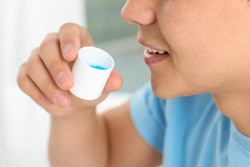
Patients are less likely to visit a dentist after a hospital stay, according to a study published in the Journal of the American Dental Association. They are slightly less likely to undergo certain types of dental procedures, including periodontic, endodontic, and oral surgery services.
Poor oral health is connected to worse outcomes for hospitalized patients. As a result, the authors of the report sought to better understand how hospital admission affects future dental services.
"Owing to both shared risk factors for medical and dental disease, as well as the impact of acute illness on access to care, hospitalized patients have been found to have worse oral health than their community-dwelling peers," wrote the group, led by Dr. Lisa Simon, a dentist and physician at the Harvard School of Dental Medicine and Harvard Medical School (JADA, September 3, 2021).
Researchers looked at a decade's worth of insurance claims data from a national insurance provider, focusing on patients who were admitted to the hospital and visited a dentist at least once in the year before the hospital admission. In total, 107,116 patients met the inclusion criteria.
Nearly two-thirds of hospital inpatients were admitted for surgical procedures. They had a median hospital stay of two days, and the most common diagnoses were osteoarthritis, appendicitis, obesity, depression, and leiomyoma of the uterus.
Patients had a mean of 1.9 dental visits in the year before they were admitted to the hospital, compared with 1.6 dental visits in the year after discharge. That totaled to nearly 35,000 patients who had a dental visit the year before admission but not the year after their hospital stay.
In addition to fewer patients seeing a dentist, those who did underwent fewer coded procedures. Analyzing Code on Dental Procedures and Nomenclature (CDT Code), dentists billed the patients for an average of 8.2 CDT codes before their hospital stay, compared with 7.0 codes afterward.
While patients received a high percentage of diagnostic, preventative, and restorative services in both time periods, the rates of other procedure types changed slightly. After a hospital stay, the number of periodontic, endodontic, oral surgery, and prosthodontic services dropped.
"Among privately insured patients with at least 1 dental visit in the year before or after a hospital stay, dental services use was lower in the 12 months after hospital discharge than in the 12 months preceding hospitalization," Simon and colleagues wrote. "Types of procedures that those who did visit a dentist underwent were largely unchanged."
It's important to note that the study only included patients with private insurance, who are at a lower risk of experiencing poor oral health outcomes. The patients studied were also younger than the mean age of people admitted to the hospital, and the research did not account for dental visits paid for out of pocket.
Also, the long-term health and cost implications of a dip in dental services after hospitalization are still unknown. In fact, the authors concluded that hospital admission or illness episodes should be a risk factor for patients falling out of care.
To prevent such a lapse in dental care, they suggested implementing efforts to enhance oral healthcare delivery and counsel patients about dental services in the time frame immediately around their hospital stay.
"There have been initiatives, albeit of limited scope, to integrate dental care providers into inpatient medical teams, and oral health care ranging from prophylaxis and scaling to tooth extraction has been delivered safely at the bedside," they wrote. "However, few of these programs have expanded beyond the pilot phase, and such efforts have been disrupted due to the COVID-19 pandemic."



















